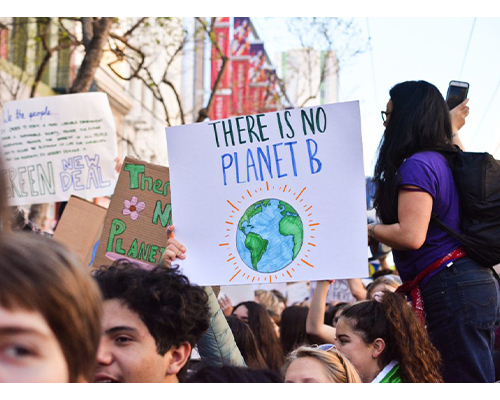FIGHT CLIMATE CHANGE
What is the United Nations position on Climate a change?
The United Nations believes that climate change is the defining issue of our time and that humanity is in a critical juncture in our battle against the crisis. Climate change comes in different forms including rising sea levels, changing temperature and volatile weather conditions. The effects of these changes to our planet’s natural state are unprecedented and will be costly to humanity without drastic change. As the world develops at an increasing rate, so has humanity’s standard of living, resulting in an increase in greenhouse gasses. These gasses are essential to humans and other living things as they keep some of the sun’s warmth from reflecting back into space, thus allowing earth to be habitable. However, the quantity of greenhouse gasses, such as carbon dioxide, has risen to the highest level in over 3 million years. Reducing the level of greenhouse gas emissions by humans is the basis of the United Nation’s plan to combat climate change.
What mechanisms have the United Nations put in place?
The United Nations has held many goal setting conferences and implemented various mechanisms that looked to combat the climate crisis. In 1988 the UN Intergovernmental Panel on Climate Change was set up to provide an objective source of scientific information for experts around the world. The information provided by the UNIPCC is still used by the leading experts today. In 1994, the UN Framework Convention on Climate Change was established. Since 1994, 197 countries have signed on. The framework convention established the threat that climate change is to humanity, set specific goals, emphasized developed countries to lead the fight and increase funding for developing countries to pursue their climate goals. Furthermore, in 1995, the Kyoto Protocol legally bound developed countries to emission reductions at a never before seen level. Decades later, the climate crisis forced leaders to take a harder stance on climate change to avoid hitting a point of no return. The Paris Agreement in 2015 brought all signatories into a common unified goal to combat climate change and further assisted underdeveloped countries to enhance their abilities. The Paris Agreement’s central aim was to strengthen the global response to the threat of climate change by keeping the global temperature rise this century well below 2 degrees Celsius above pre-industrial levels and to pursue efforts to limit the temperature increase even further to 1.5 degrees Celsius. Coming soon, the Glasgow Climate Convention from October 31st- November 12th will look to reflect on past goals and agreements, adjusting goals for both the developed and developing countries




